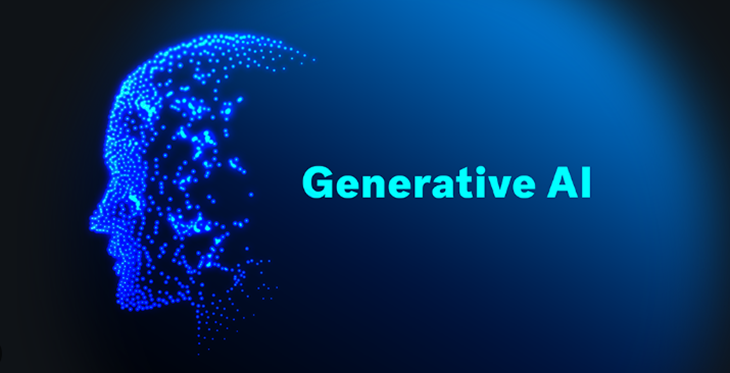The integration of Generative Artificial Intelligence (Gen AI) into the Software Development Life Cycle (SDLC) presents an incredible evolutionary opportunity to accelerate the development of new software solutions, particularly improving accuracy and efficiency. Gen AI is rapidly transforming all phases of the SDLC including project planning, requirements management, design and prototyping, coding and optimization, testing and deployment. We will cover the Gen AI contributions to each SDLC phase in upcoming blogs, but wanted to start with requirements management.
Generative AI compared to traditional AI

Generative AI and traditional AI (also known as discriminative AI) are two broad categories within the field of artificial intelligence, each with its own approaches, methodologies, and applications. Generative AI focuses on generating new content that resembles the training data it has learned from, while traditional AI primarily focuses on classification, regression, or other discriminative tasks based on input features.
Gen AI-driven requirements management is the practice of using artificial intelligence tools to enhance the efficiency and quality of processes like elicitation, analysis, and documentation. Gen AI focuses on creating new content and data, while traditional AI solves specific tasks with predefined rules. Gen AI uses unsupervised learning and generative models, while traditional AI often employs supervised learning and discriminative models.
How Gen AI Works in Requirements Management

GenAI can help kickstart the requirement-gathering phase by automating the assimilation and synthesis of requirements from a wide mix of available sources, such as existing documentation, feedback information and usage data. In addition, conversations from user interviews and brainstorming sessions can be converted to well-structured requirement documents.
The automation process begins with stakeholder interviews, a critical step in understanding the unique challenges and requirements of the software or system. These interviews are the foundation for developing user stories, which are concise, narrative descriptions of software features from the end-user’s perspective. Using Generative AI, these insights can be transformed into structured user stories. For example, an insurance company is seeking ways to improve its document delivery system. The interview process might reveal hundreds of examples where the current system struggles to synchronize documentations, leading to discrepancies, employee frustration and customer dissatisfaction. Using Generative AI, these insights are transformed into structured user stories.
Once the user stories are defined, the next critical step is developing test cases. Generative AI significantly streamlines this process by analyzing user stories and generating detailed test scenarios, ensuring comprehensive coverage of all functional requirements. For example, in the insurance document delivery feature the detailed test scenarios could cover various policy documents that get generated based on business transactions.
Finally, the traceability matrix is a pivotal tool in the SDLC, linking interview questions, user stories, and test cases. The matrix provides a clear roadmap of how each requirement is addressed and validated. Gen AI can be applied to process the various links, ensuring that all stakeholder requirements are met.
The Business Analyst (or Product Manager) Role in Gen AI Requirements Management

Business analysts (BAs) play a critical role in the requirements management process, responsible for gathering and documenting requirements, as well as working with stakeholders to ensure that the final product meets their respective needs. In some organizations this role is fulfilled by a Product Manager instead but the responsibilities are broadly similar. The Product Manager may have some additional market facing responsibilities such as understanding the market dynamics and the customer.
In the past, BAs have relied on manual processes to gather and document requirements. This can be a time-consuming and error-prone process, particularly when dealing with complex systems. Gen AI is now starting to change the way that BAs work. Gen AI-powered tools can automate many of the tasks involved in requirement gathering and documentation, freeing up BAs to focus on more strategic work. The efficiency gains for a BA can be in the range of 20-40% which allows the BA to focus effort on higher value-added activities such as working with and understanding the customer.
Benefits of Generative AI in Requirements Gathering and Documentation

The integration of Gen AI into the requirements gathering and documentation process offers several significant benefits:
Efficiency: Gen AI accelerates the requirements gathering and documentation process, reducing the time and effort required to capture, analyze, and document stakeholder requirements.
Accuracy: By leveraging machine learning algorithms, Generative AI enhances the accuracy and consistency of requirements documentation, minimizing errors and misunderstandings between stakeholders and development teams.
Consistency: Gen AI ensures consistency across documentation artifacts by applying predefined templates, styles, and conventions, maintaining uniformity throughout the SDLC.
Adaptability: Gen AI systems can adapt to evolving requirements and changing project dynamics, accommodating updates, modifications, and refinements seamlessly.
Collaboration: Gen AI facilitates collaboration among distributed teams and stakeholders by providing a centralized platform for requirements gathering, documentation, and feedback.
Conclusion
Automating the Requirements Management process in the SDLC with Generative AI brings many benefits, including improved requirement gathering accuracy, faster development cycles through automated artifact and test case generation, and better alignment between business needs and technical solutions. It can help BAs collaborate more effectively with internal and external stakeholders, generating additional value for the business.

